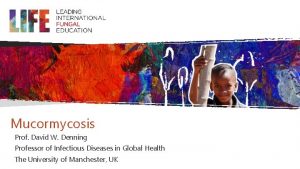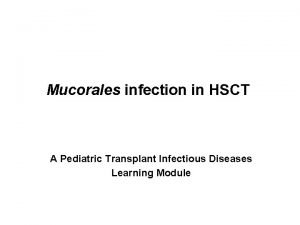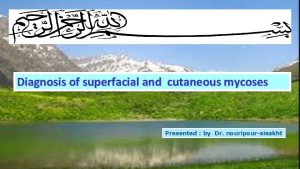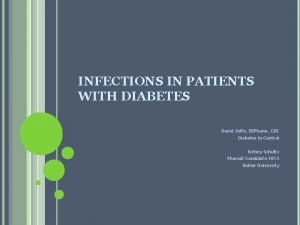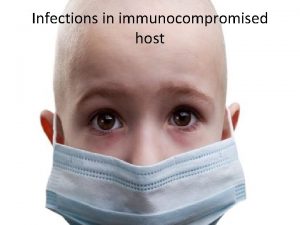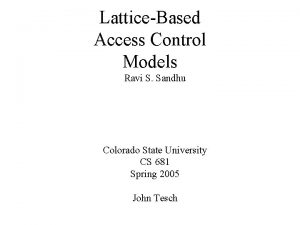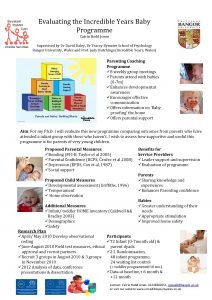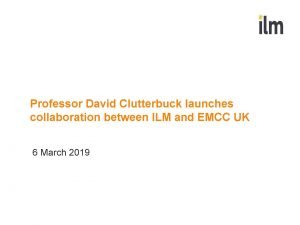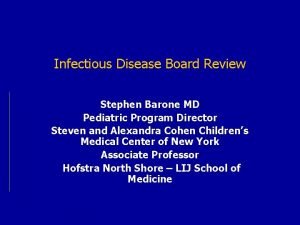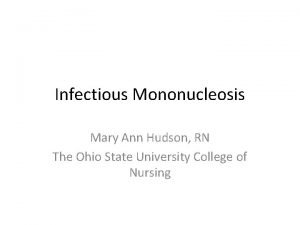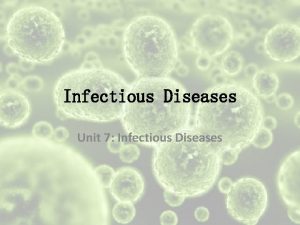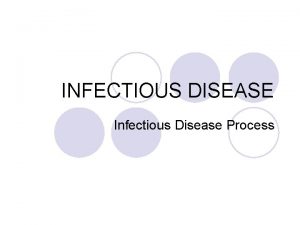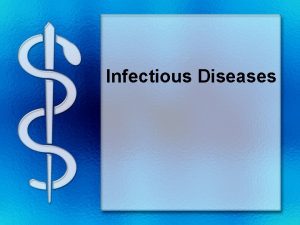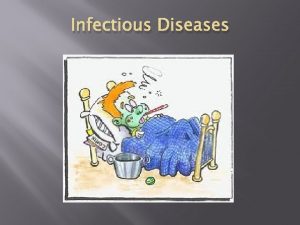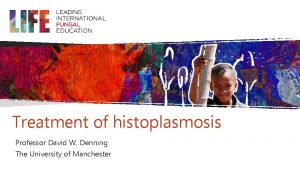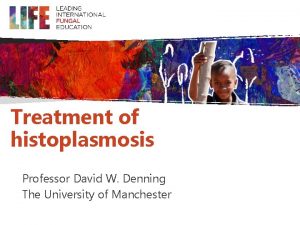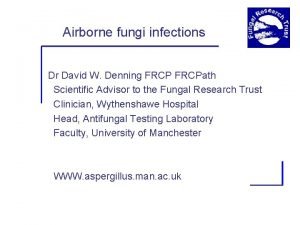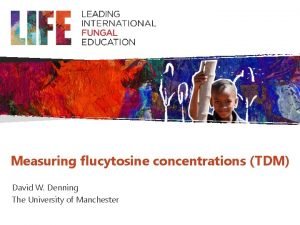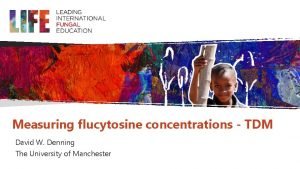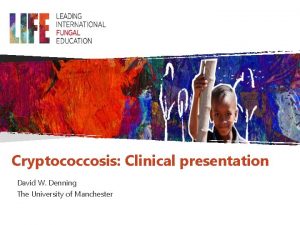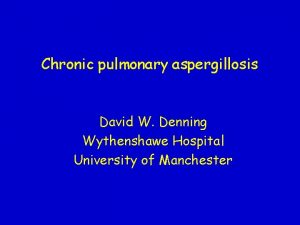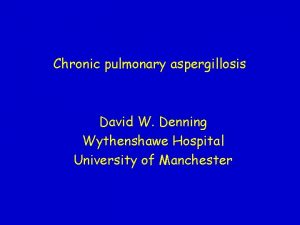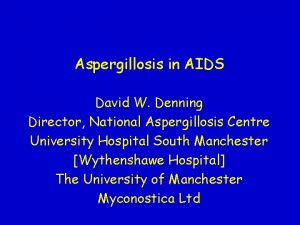Mucormycosis Prof David W Denning Professor of Infectious



























- Slides: 27

Mucormycosis Prof. David W. Denning Professor of Infectious Diseases in Global Health The University of Manchester, UK

Intended Learning outcomes To be aware of the epidemiology of mucormycosis To understand the pathophysiology of mucormycosis To be familiar with different clinical manifestations of mucormycosis To be aware of the available management options for mucormycosis To be aware of the complications and prognosis of mucormycosis

Introduction: Mucormycosis • Mucormycosis (previously Zygomycosis) is an uncommon life-threatening fungal infection that occurs mostly in immunocompromised or trauma patients • It is an aggressive (acute), granulomatous, and opportunistic infection that is caused by several members of fungi in the subphylum Mucoromycotina • Agents of mucormycosis (Mucorales) have an intrinsic ability to invade blood vessels and can affect different parts of the body • Cerebro-rhino-orbital mucormycosis is the most common, and the most aggressive, form of mucormycosis • Uncontrolled metabolic conditions (especially diabetes mellitus in ketoacidosis) is the main risk factor and the core determinant of the world-wide incidence of mucormycosis Wali et al. J Infect Public Health. 2012; 5(2): 116 -26

Epidemiology • Mucormycosis is a rare fungal infection, estimated to affect ~10, 000 individuals globally, although the incidence in India is much higher • Most affected individuals have poorly controlled diabetes and may have metabolic acidosis, or are immunocompromised • Rare cases occur in immunocompetent individuals following traumatic inoculation of fungal spores, including tornadoes and bomb blasts • Outbreaks and clusters of mucormycosis, though rare, have been reported in hospitals and among organ transplant recipient populations • Mortality remains high (30 -70%) despite advances in diagnosis and treatment Duffy et al. Pediatr Infect Dis J. 2014; 33: 472 -6. Neblett et al. N Engl J Med. 2012; 367: 2214 -25.

Epidemiology: Recent study from Mexico • 72% of 418 cases of mucormycosis were diabetic patients • Sinusitis accounted for 75% of the reported cases • Mortality rate was 51% Corzo-León et al. Med Mycol. 2018; 56: 1 -16

Clinical spectrum of mucormycosis • Rhino-cerebral mucormycosis Brain and nasal sinuses • Most common • Pulmonary mucormycosis • Cutaneous mucormycosis • Gastrointestinal mucormycosis • Disseminated mucormycosis • Isolated renal mucormycosis Kauffman CA. Clin Infect Dis 2004; 39: 588 -90. Roden et al. Clin Infect Dis 2005; 41: 634 -53.

Risk factors - major risk factors • Uncontrolled diabetes mellitus in ketoacidosis • Burns (major) • Severe trauma (tornados, tsunamis, • 80 -90% of rhinocerebral mucormycosis war) • Protein energy malnutrition • Deferoxamine therapy • Iron and aluminium overload Binders et al. Clin Microbial Infect. 2014; 6: 60 -6.

Risk factors - other risk factors • Other forms of metabolic acidosis • Prematurity and low birthweight (gastro -intestinal mucormycosis) • Treatment with immunosuppressive drugs (corticosteroids, anti-neoplastics) • HIV/AIDS • Organ or bone marrow transplantation • Chronic kidney disease • Neutropenia • Liver cirrhosis and hepatic failure • Malignancies • ~15 -20% of patients have no evidence • IV drug abuse of underlying conditions Binders et al. Clin Microbial Infect. 2014; 6: 60 -6.

Aetiology: Several genera of Phycomycetes • Common • Rhizopus spp. • ~70% of rhinocerebral mucormycosis cases • Rare • • Apophysomyces spp. Cunninghamella spp. Lichtheimia (Absidia) spp. Saksenaea spp. • Mucor spp. • Rhizomucor spp. Kauffman CA. Clin Infect Dis 2004; 39: 588 -90. Roden et al. Clin Infect Dis 2005; 41: 634 -53. Binders et al. Clin Microbial Infect. 2014; 6: 60 -6

Pathogenesis • Agents of mucormycosis are ubiquitous and frequently airborne. • Infections mainly involves the lungs, sinuses and the brain • Pathogenesis involves invasion of major blood vessels, with consequent ischemia, necrosis, and infarction of contiguous tissues • Neutrophils play a central role in the defence of the host against mucormycosis • Ketoacidosis, hyperglycaemia, and hypoxia are excellent growth conditions for these fungi • Ketoacidosis decreases inflammatory responses and delays local aggregation of granulocytes and fibroblasts Binders et al. Clin Microbial Infect. 2014; 6: 60 -6 Wali et al. J Infect Public Health. 2012; 5: 116 -26

Clinical manifestation: Rhinocerebral mucormycosis Unilateral headache - behind the eye Facial pain Eye swelling (Proptosis) + visual disturbance Necrotic lesions on the hard palate or nasal mucosa • ENT symptoms • • Nasal congestion Black discharge Acute sinusitis Epistaxis • Systemic symptoms: fevers Wali et al. J Infect Public Health. 2012; 5: 116 -26.

Clinical progression of rhinocerebral mucormycosis • Stage I: Infection of the nasal mucosa and sinuses. • Stage II: Orbital involvement (orbital apex syndrome, superior orbital fissure syndrome). • Stage III: Cerebral involvement in which intracranial spread occurs via one of the following routes: v Ophthalmic artery v Superior orbital fissure v Cribriform plate Onerci et al. Rhinology. 1991; 29: 321 -4 Wali et al. J Infect Public Health. 2012; 5: 116 -26

Clinical manifestation - Pulmonary Radiologically. Acute pulmonary mucormycosis is usually indistinguishable from invasive pulmonary aspergillosis – the halo and reverse halo signs may be seen • 2 nd most common presentation after Cerebro-Rhino-Orbital mucormycosis • Mainly in non-diabetic immunocompromised patients • Clinical presentation • • • Fever, Cough +/- haemoptysis Chest pain Increasing shortness or breath Pleuritic rub or rhonchi • Chronic pulmonary mucormycosis is a rare recognised syndrome Reverse halo sign in mucormycosis Jung et al. Clin Microbiol Infect. 2015; 21: 684. e 11 -18

Clinical manifestation – Cutaneous • ~20% of mucormycosis • Pathophysiology • Primary - direct inoculation of organism into disrupted integument; trauma or burns • Secondary - haematogenous seeding from disseminated diseases • Clinical presentation • Skin induration and erythema • Necrotic ulcers with dark central area Primary cutaneous mucormycosis • The margins of the ulcers are sharply demarcated Castrejon-Perez. Ann Bras Dermatol. 2017; 92: 304 -11.

Clinical manifestation –Gastrointestinal • The least common clinical form • ~10% of mucormycosis • At risk: • Protein energy malnutrition, • low-birth weight and premature infants, • Ambulatory peritoneal dialysis • Presentation • Abdominal pain or distension • Nausea, vomiting, diarrhoea • Haematochezia • Pathology: GI necrosis and perforation Mohta et al. Indian J Pathol Microbial 2011; 54: 664 -5

Isolated Renal Mucormycosis • The kidney is involved in up to 20% of disseminated mucormycosis • Isolated renal mucormycosis is very rare • >70% of patients are immunocompetent with no identifiable classic risk factors • Renal transplant recipient with concomitant diabetes mellitus are highest risk group • Other risk factors • • • AIDS Diabetes Drug abuse Organ transplantation Male > Female Gupta et al. Nephrol Dial Transplant 1999; 14: 2720 -5 • Pathogenesis is not clear; haematogenous dissemination to the kidneys and retrograde spread from lower urinary tract have been suggested • Pathology • Extensive hyphal angioinvasion • Renal vessels thromboses • Parenchymal necrosis • Cortical and medullary Pahwa et al. Korean J Urol. 2013; 54: 641 -643. Chakrabarti et al. J Infect. 2001; 42: 261 -6. Goel et al. Am J Med Sci. 2009; 338: 330 -3.

Isolated Renal Mucormycosis • Clinical manifestation • • Flank pain Flank mass Renal angle tenderness Gross haematuria Pyuria Fever Renal failure due to occlusion of renal arteries Gupta et al. Nephrol Dial Transplant 1999; 14: 2720 -5. Verma et al. Basic Appl Pathol. 2011; 4: 66 -70. Thomas et al. Indian J Med Microbiol 2008; 26: 269 -71. Management • Renal mucormycosis WITH systemic dissemination • Early nephrectomy + • Parenteral antifungal • Renal mucormycosis WITHOUT systemic dissemination • Early nephrectomy +/- parenteral antifungal • Antifungals alone (2 of the 4 reported cases died)

Clinical manifestation – Disseminated • Disseminated disease stems from pulmonary focus • Spread is haematogenous • Deferoxamine therapy is the most significant risk factor for disseminated disease • Manifestation: • • Headache Fever Visual disturbance Altered mentation Sarrami et al. Int J Prev Med. 2013; 4: 1468– 1471.

Diagnosis: Laboratory • Sample collection • Tissue biopsy - GOLD STANDARD • Tissue swabs – unreliable • Direct microscopy • 10 -20% KOH + routine fungal stains • Fluorescent brighteners (Calcofluor) • Culture Biomarkers • Beta- D-glucan • Negative • Galactomannan • Negative • Blood cultures are rarely positive • Positive tissue cultures alone are not sufficient to make a diagnosis • Molecular analysis Wali et al. J Infect Public Health. 2012; 5: 116 -26

Diagnosis: Histopathology Aspergillus spp. Agents of mucormycosis Non-septate hyphae with right-angle branching Septate hyphae with acute-angle branching Guarner & Brandt. Clin Microbiol Rev. 2011; 24: 247 -280

Diagnosis: Imaging studies Both CT and MRI can be used • Roles • Sinus imaging • Mucosal thickening • Detect fungal angioinvasion • Changes in air-fluid level • Bone destruction and necrosis • Cavernous sinus involvement • Soft tissue involvement • Intracranial involvement MRI provides better delineation of the blood vessels and intracranial extension

Paranasal sinus mucormycosis Opacification of the left maxillary (white arrow) and ethmoidal (black arrow) sinuses with scattered high-density areas in a patient with mucormycosis.

Management of mucormycosis • Antifungal therapy • Amphotericin B • Posaconazole • Isavuconazole Early surgical debridement + antifungal therapy + control of underlying risk factor (if possible) is recommended • Surgery (early surgical intervention is associated with improved survival) • Removal of pulmonary lesions • Aggressive-all necrotic tissues (palate, nasal cavity or eye structures) • Excision of infected brain tissue may be required • Revision surgeries may be required • Hyperbaric oxygen therapy • High oxygen pressure increases the ability of neutrophils to phagocytose agents of mucormycosis • Diabetic control Monitor carefully for any signs of recurrence, with repeated local inspection

Complications • Cerebro-Rhino-Orbital mucormycosis • Pulmonary • Neurological deficits • Blindness • Cerebral thrombosis / infarction and stroke • Anosmia - loss of sense of smell • Cavernous sinus thrombosis • Internal carotid artery thrombosis • Pulmonary thrombosis/infarction • Cutaneous • • Soft tissue loss • Amputations Gastrointestinal • Malnutrition • Short gut syndrome (following resection ) Kauffman CA. Clin Infect Dis 2004; 39: 588 -90. Binders et al. Clin Microbial Infect. 2014; 6: 60 -6

Prognosis Clinical form Mortality Mucormycosis in HIV/AIDS ~100% Disseminated mucormycosis ~90% Rhino-cerebral mucormycosis ~30 -85% Sinus mucormycosis ~46% Pulmonary mucormycosis ~76% • Severity Cutaneous mucormycosis ~4 -10% • Underlying risk factors Isolated renal mucormycosis ~35% • Prognosis is generally poor but variable (late diagnosis, extensive spread) • All-cause mortality rate ~54% • Mortality rates depends on: • Clinical form (body site affected), • Type of fungus • Use of surgical intervention Roden et al. Clin Infect Dis 2005; 41: 634 -53. Skiada et al. Skinmed. 2013; 11: 155 -9

Summary • Mucormycosis is an uncommon, aggressive and necrotizing infection, estimated to affect some ~10, 000 individuals globally each year • Cerebro-rhino-orbital mucormycosis is the most common, and the most aggressive form of mucormycosis • Radical surgical debridement, antifungal therapy, correction of the underlying metabolic or impaired immunological status, and control of other concomitant infections are necessary for improved survival • Mortality is relatively low for cutaneous forms, higher (30 -90%) in disseminated disease and cerebro-rhino-orbital mucormycosis, and is almost always fatal in HIV/AIDS

END
 Mucormycosis
Mucormycosis Hemaptosis
Hemaptosis Mucormycosis caused by
Mucormycosis caused by Posaconazole dose
Posaconazole dose Mucormycosis treatment
Mucormycosis treatment Symptoms of black fungus
Symptoms of black fungus Mucormycosis
Mucormycosis Candia
Candia Promotion from associate professor to professor
Promotion from associate professor to professor When does her wonderful adventure begin?
When does her wonderful adventure begin? Lord denning quotes
Lord denning quotes Nikki denning
Nikki denning Phil denning
Phil denning Stuffinspace
Stuffinspace Denning lattice model
Denning lattice model Graham-denning model
Graham-denning model Graham denning model
Graham denning model Professor david daley
Professor david daley Professor david nicol
Professor david nicol David clutterbuck partnership
David clutterbuck partnership David best recovery
David best recovery Infectious canine hepatitis in dogs
Infectious canine hepatitis in dogs Infectious disease board review
Infectious disease board review Infectious mononucleosis
Infectious mononucleosis Chapter 26 infectious disease prevention and control
Chapter 26 infectious disease prevention and control Quizlet
Quizlet Infectious nucleic acid
Infectious nucleic acid Icd 10 morbus hansen
Icd 10 morbus hansen
